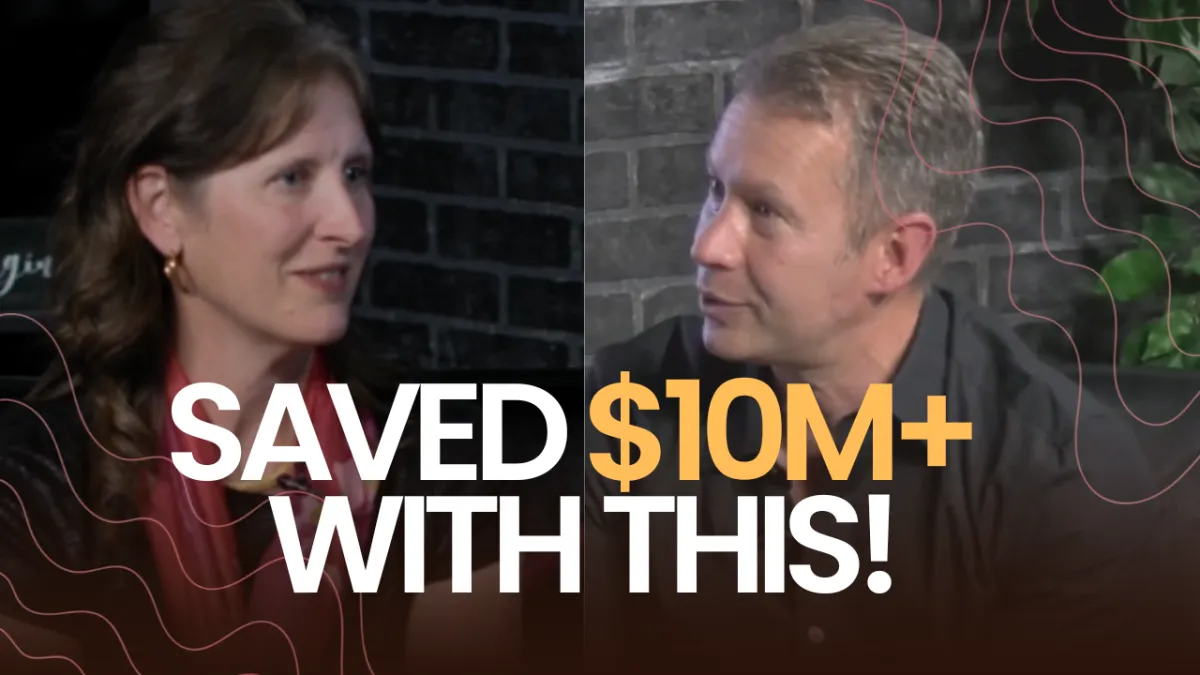
How to Transform Workplace Culture and Leadership (Insights from Jennifer Ayres, CEO of Senscient)
How to Transform Workplace Culture and Leadership (Insights from Jennifer Ayres, CEO of Senscient)
In a world where employee engagement, purpose-driven leadership, and organizational resilience are more critical than ever, Jennifer Ayres, CEO of Senscient, shares powerful insights on how leaders can create meaningful change. In her conversation with Dr. Lance Knaub on Moving Mountains, Jennifer reveals how she helps companies double engagement, save millions, and navigate the evolving workplace.
Here are the key takeaways from their discussion—essential lessons for any leader looking to drive sustainable success.
1. The Missing Piece in Organizational Change: People & Purpose
Jennifer spent over 15 years at Accenture, helping companies manage large-scale transformations. But she noticed a gap:
"There was a piece missing—how to nurture the culture and create purpose at work."
Many organizations focus on strategy and processes but neglect the human element. Jennifer’s approach at Senscient (a blend of "sentient being" and "ascendant") centers on elevating meaning at work by aligning business goals with employee engagement.
Key Insight:
Culture drives performance. Companies that prioritize purpose see higher retention, productivity, and profitability.
2. Case Study: Doubling Net Promoter Score in 2 Years
One of Jennifer’s clients—a tech spin-off—was struggling with low trust, unclear roles, and poor communication. Senscient helped by:
Diagnosing cultural friction points
Improving team handoffs and accountability
Clarifying the company’s purpose
Result: The company doubled its Net Promoter Score (NPS) in two years—a key indicator of employee satisfaction and customer loyalty.
Key Takeaway:
Clear communication + role clarity = higher engagement.
3. Saving Tens of Millions by Fixing Change Management
Another client was undergoing a massive digital transformation but was at risk of delays and cost overruns. Jennifer’s team stepped in to:
Align leadership on the "why" behind the change
Train employees on new processes before tech rollout
Reduce dependency on tech alone
Result: The company met its deadline and saved tens of millions by focusing on people-first change management.
Key Lesson:
Change fails when employees don’t understand their role in it.
4. The #1 Leadership Mindset: "Change Yourself First"
Jennifer’s core philosophy for leaders:
"If you want to make impactful change, you must change yourself first."
She emphasizes:
✅ Meditation & mindfulness (even 1 minute of breathing helps)
✅ Gratitude practices (she shares 7 daily gratitudes with her husband)
✅ Sleep & stress management (7.5 hours is her sweet spot)
Why It Matters:
Self-awareness leads to better decision-making.
Leaders who model resilience inspire resilient teams.
5. The Future of Work: AI, Hybrid Challenges & Burnout
Jennifer sees three major trends shaping workplaces today:
Employees questioning purpose (post-pandemic clarity gaps)
Middle-management burnout (caught between leadership and teams)
AI & digital acceleration (balancing efficiency with human connection)
Her advice?
Be curious, not rigid.
Attack problems, not people.
Set boundaries to avoid burnout.
Final Thought: Leadership Starts with You
Jennifer’s journey—from corporate consultant to culture-shaping CEO—proves that the best transformations begin within. Whether you’re leading a team of five or 50,000, her insights remind us that sustainable success comes from aligning people, purpose, and strategy.
